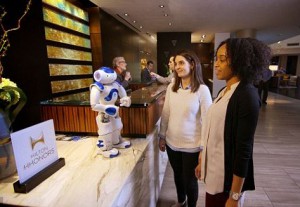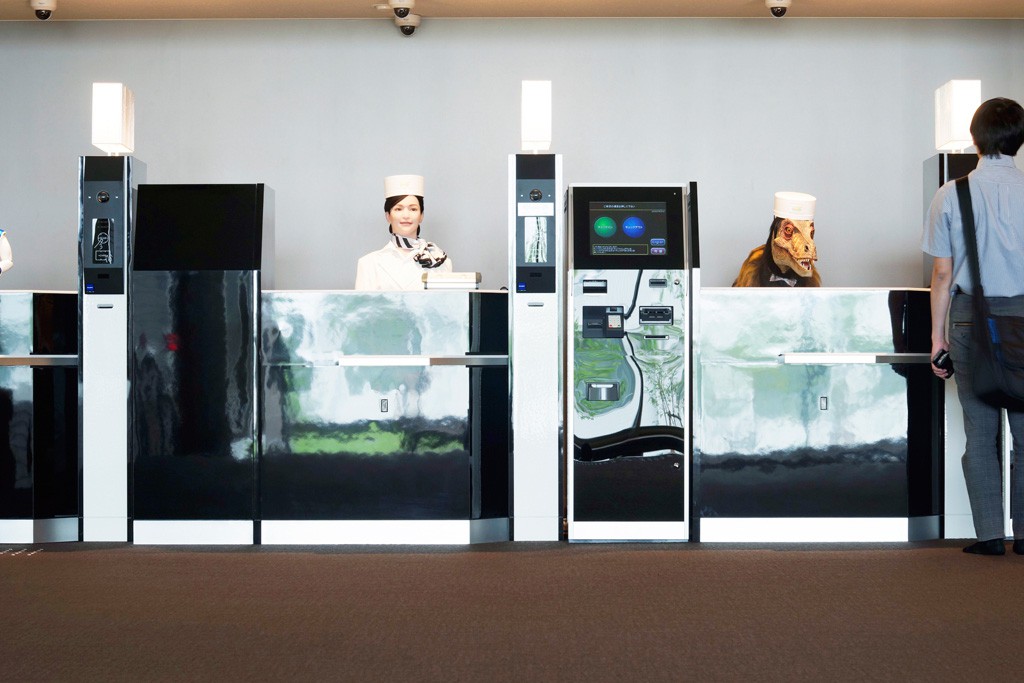By Anca Gagiuc on March 16, 2016 in Technology
We already have robots serving us in different industries: they build our cars, entertain the family, and defuse bombs. A new bot has emerged from IBM’s labs as a result of collaboration with Hilton Worldwide—the first Watson-enabled robot concierge in the hospitality industry, Connie.
build our cars, entertain the family, and defuse bombs. A new bot has emerged from IBM’s labs as a result of collaboration with Hilton Worldwide—the first Watson-enabled robot concierge in the hospitality industry, Connie.
Connie, named for Hilton’s founder Conrad Hilton, represents the first time IBM has developed a Watson-enabled robot for the hospitality sector. The automaton can already be found in the Hilton McLean hotel in Virginia, where it will work with Hilton’s team members as a regular concierge, answering questions about nearby restaurants, tourist attractions, and hotel information. Connie will not be able to check guests in to the hotel.
The 23-inch wonder (that’s 58 centimeters) has as physical support Nao, a French-made android (Aldebaran) that has become the first platform used for educational and customer care tasks, partly because its relative affordability—approximately $9,000. Connie is more about brains than looks though as its brain is based on IBM’s flagship AI program Watson, the Jeopardy!-winning system engineered to understand people’s questions and answer them.
Connie’s brain uses a combination of Watson APIs, including Dialog, Speech to Text, Text to Speech, Text to Speech and Natural Language Classifier, enabling it to greet guests upon arrival, and to answer questions about the hotel’s amenities, services and hours of operation. The information on local attractions and interesting sites is actually channeled from the travel platform WayBlazer’s database, also an IBM partners. What’s more interesting is how Connie improves itself through interactions with human customers, learning how to fine-tune its recommendations.
is how Connie improves itself through interactions with human customers, learning how to fine-tune its recommendations.
“This project with Hilton and WayBlazer represents an important shift in human-machine interaction, enabled by the embodiment of Watson’s cognitive computing,” said Rob High, IBM fellow and vice president and chief technology officer for IBM Watson. “Watson helps Connie understand and respond naturally to the needs and interests of Hilton’s guests—which is an experience that’s particularly powerful in a hospitality setting, where it can lead to deeper guest engagement.”
IBM says Connie was not designed to replace a human concierge, but rather to make employees’ jobs easier. “There are routine tasks that we undertake that you can move over to a machine,” said Jonas Nwuke, IBM’s Watson ecosystem manager. “But what that means in most cases is that it frees up the human being to work on higher order problems.”
The concept behind Connie is not a new one. If you go to Japan, you can stay at Henn-na Hotel in an amusement park that is staffed entirely by robots, including the Nao-bot, as well as a life-sized velociraptor used for checking in English patrons. About a year ago, Aloft hotel in Cupertino, Calif. included an autonomous robotic butler to deliver small amenities—such as toothbrushes and small snacks—to guests’ rooms. The robot proved to be such a success, that the hotel chain decided to bring similar robots, named Butlr, to two of its other properties.
Hilton’s idea takes things a bit further. Connie is designed to interact verbally with guests instead of simply using the robot as delivery service.
Hilton’s mechanical helper is only the latest example in the company’s history of innovation to improve guest stays—in 1947 Hilton was the first hotel company to introduce televisions to guest rooms. Connie’s debut is seen by its creators as a “pilot,” so we might be seeing more Connie-Nao robots in other Hilton hotels in the future.


